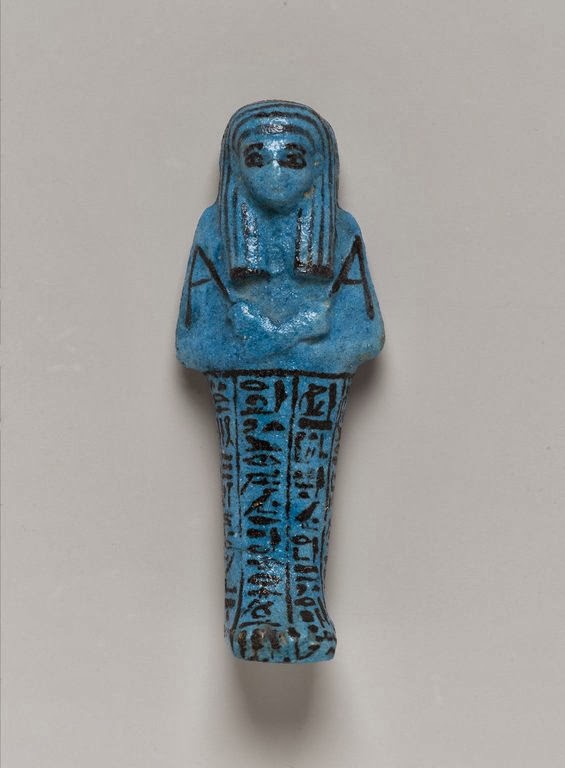Chronicle of the Pharaohs
The reign by reign record of the rulers and Dynasties of ancient Egypt
Peter A. Clayton
(2006)
Scorpion and Narmer
(page 17-19)
Narmer Palette
 |
| front and back of the Narmer Palette |
The front of the palette:
This side of the tablet has the main feature as a carving of Narmer smiting a prisoner. He is holding the prisoner by his hair, this symbolism became popular throughout Ancient Egypt.
It is shown that the god Horus is on the Kings side as he is holding an enemy and waiting for the King.
The back of the palette:
" The king walks behind a procession of four standard-bearers towards two vertical rows of decapitated captives, five in each row, above whom there is a schematic boat with a cabin amidships and an apparent falcon standard on board as a totem. " (page 18)
The Central panel has been interpreted as Mesopotamian art in Egpyt, two Serpopards; four legged creatures, with long necks that in this image are entwined to form "the cosmic scoop".
The bottom panel shows a bull (titled later as 'Strong Bull of Horus') attacking a fortified town with a fallen enemy beneath his feet.
Khafre
(page 51-55)
Diorite Statue of Khafre
(page 52-54)

This is a large statue of Khafre that was found inside his temple, made of diorite, a hard stone, it shows him seated with the Falcon form of Horus behind his headdress. The positioning of Horus then shows that he is protecting the King.
The artist is unknown.
The Great Sphinx
(page 55)
Was carved from limestone left over from quarrying blocks for the pyramid of Khufu. The crouched half lion with the human head represents Re-Harakhte (the sun god)
The face is thought to be representing Khafre and this is "the oldest large scale royal portrait"
For the last four and a half millennia is has been buried under sand, although a stele at the Sphinx's chest records that prince Tuthmosis IV cleared away the sand.
Pepi I to Pepi II
(page 65-67)
Green slate kneeling statue of Pepi I. In his hands he is offering food or wine to a god, this statue is an early example of what became a popular genre of statues that was popular with royals.
Tuthmosis III
(page 108-111)
Statue of him kneeling and holding offerings of wine or water to the gods.
Tutankhamun
(page 128-135)
 |
| gold death mask |
This mask covered the head of the mummy within the coffin.
 |
| Gilded wooden statue of Isis |
This is one of four goddesses that "guarded the canopic shrine and chest of Tutankhamun with their outstretched arms". (page 129)
 |
| inlaid panel of his throne |
"The king is seated whilst his wife, Ankhesenpaaten (it carries the Armans form of their names) adjusts his Broad Collar. " (page 129)
 |
| This is the the full chair (chair not shown in the book) |
 |
| wall decoration from the burial chamber |
Provisions for the Kings tomb were available beforehand however it is thought the death of the King was unplanned as the embalming has been done poorly and the chamber was not fully prepared and decorated. The decorations that have been done are all in the burial chamber and would have been done within 70 days after the death.
 |
| Inner coffin |
This golden coffin holds the mummified body of the King, found inside two other coffins, the other coffins both wooden with an overlay of gold.
 |
| Middle coffin |
It is thought that this coffin was not made for the King as the facial features are very different to the others.
 |
| Anubis Jackal |
"Anubis Jackal guards the open doorway from the burial chamber into the Treasury in Tutankhamun's tomb." (page 134)
The background shows a gilded wood shrine.
Ramesses II
(page 146-155)
Temple at Abu Simbel
 |
| two of the four figures on the entrance of the temple |
When first discovered it was unknown if the figures were seated or standing because of the amount of sand surrounding the figures.
It has been built so exactly that the rising sun on 22nd of February and October the rising sun lights three of the four gods carved inside the mountain It is thought that the fourth god does not get lit because he is the god Ptah, the god of the Underworld.
Ramesses XI
(page 170-171)
 |
| ushabti of Ramesses XI |
" Found in the debris of his unused tomb" (page 170)
Herihor to Psunennes II
(page 174-181)
Blue faience royal ushabti's :
Psusennes' gold face mask
(page 180)
 |
| Gold Mask of Psusennes' |
" certainly the finest of several found at Tanis, although it does not compare with the earlier one of Tutankhamun. " (page 180)
His tomb was found intact.
" A large red carved granite sarcophagus enclosed a black granite anthropoid coffin, which in turn held a silver inner coffin. Over the face of the mummy lay a gold mask, but the mummy had been substantially destroyed by the poor conditions. " (pages 180-181)
Piankhi to Tanutamun
(page 190-193)
Mentuemhet, Prince of Thebes
(page 193 - sidebox)
 |
| Grey granite statue of Mentuemhet |
This statue has his name and title on his belt, it is one of few great officials whose statues have survived.
Amyrtaeus to Darius III
(page 201-205)
 |
| Nectanebo II |
This statue shows Nectanebo II sheltered by the god Horus in the form of the Falcon.














